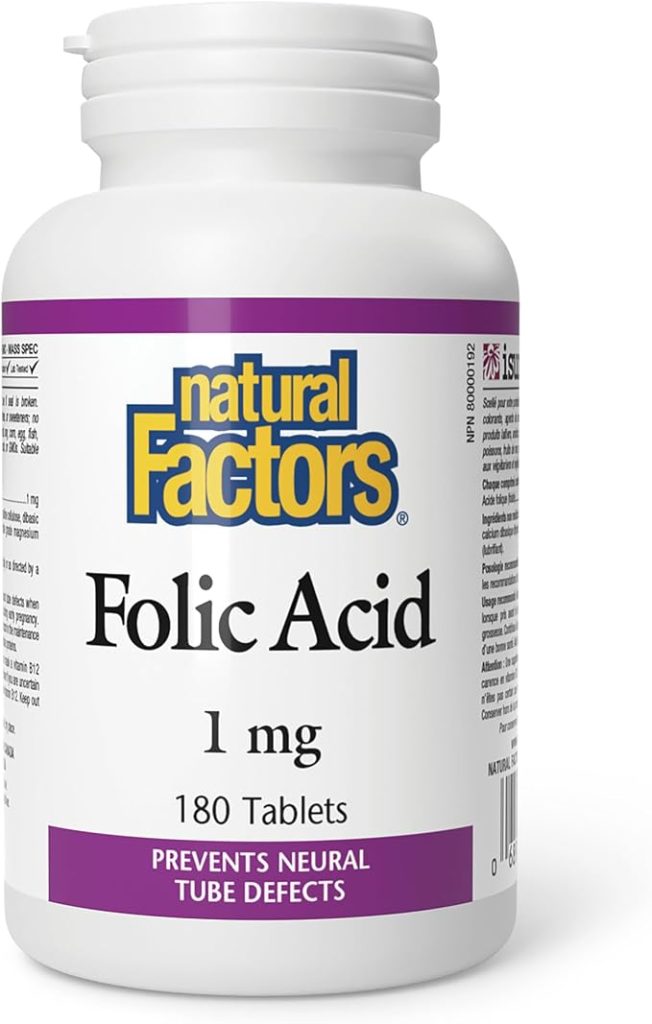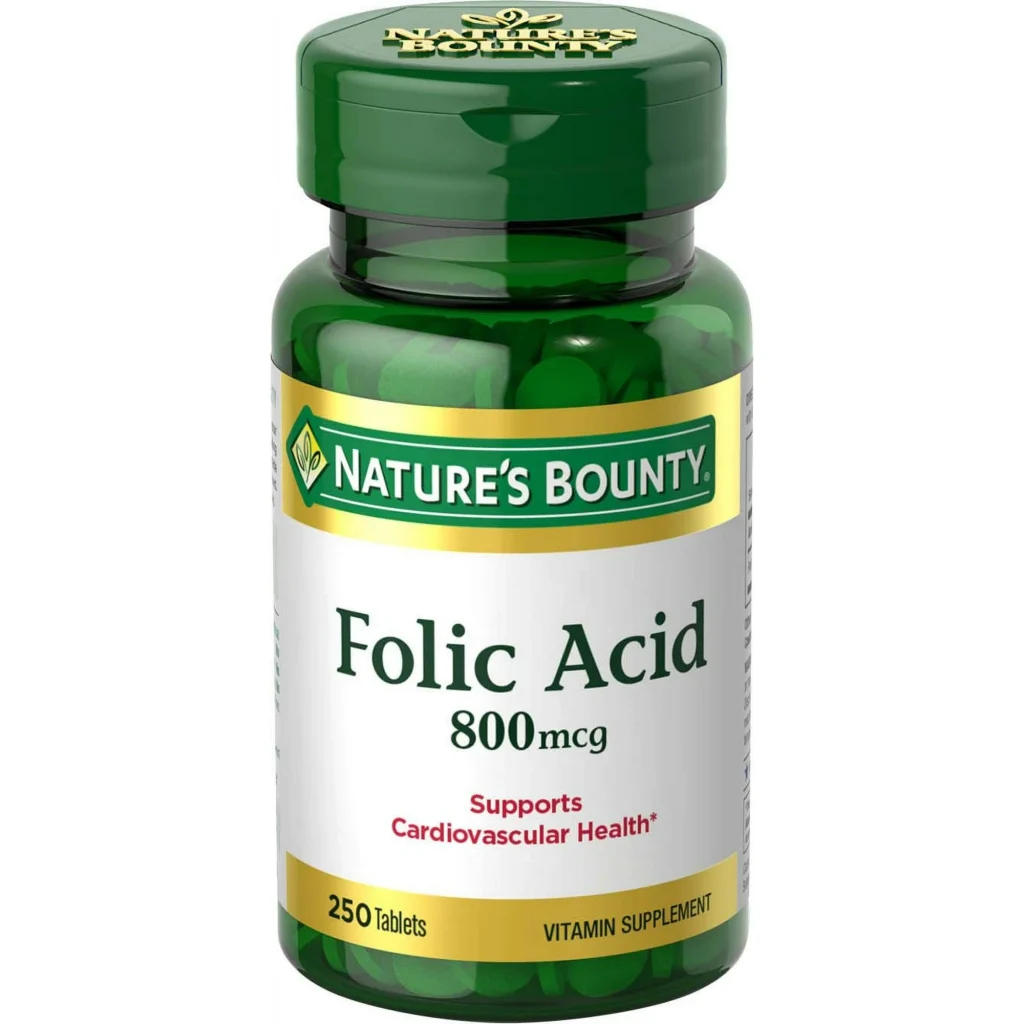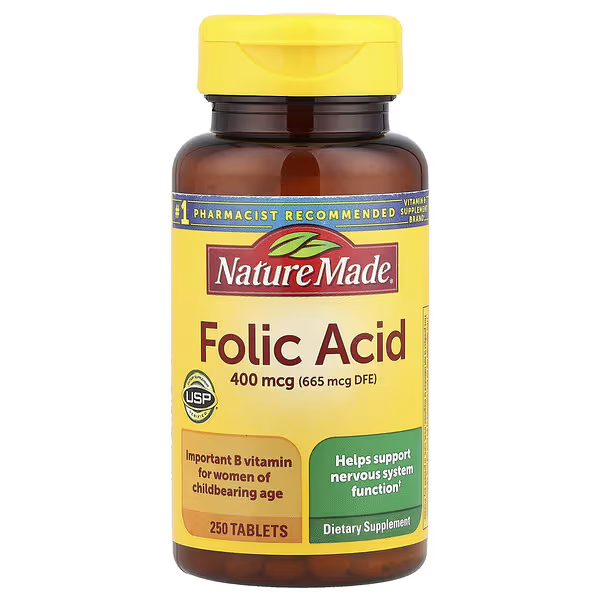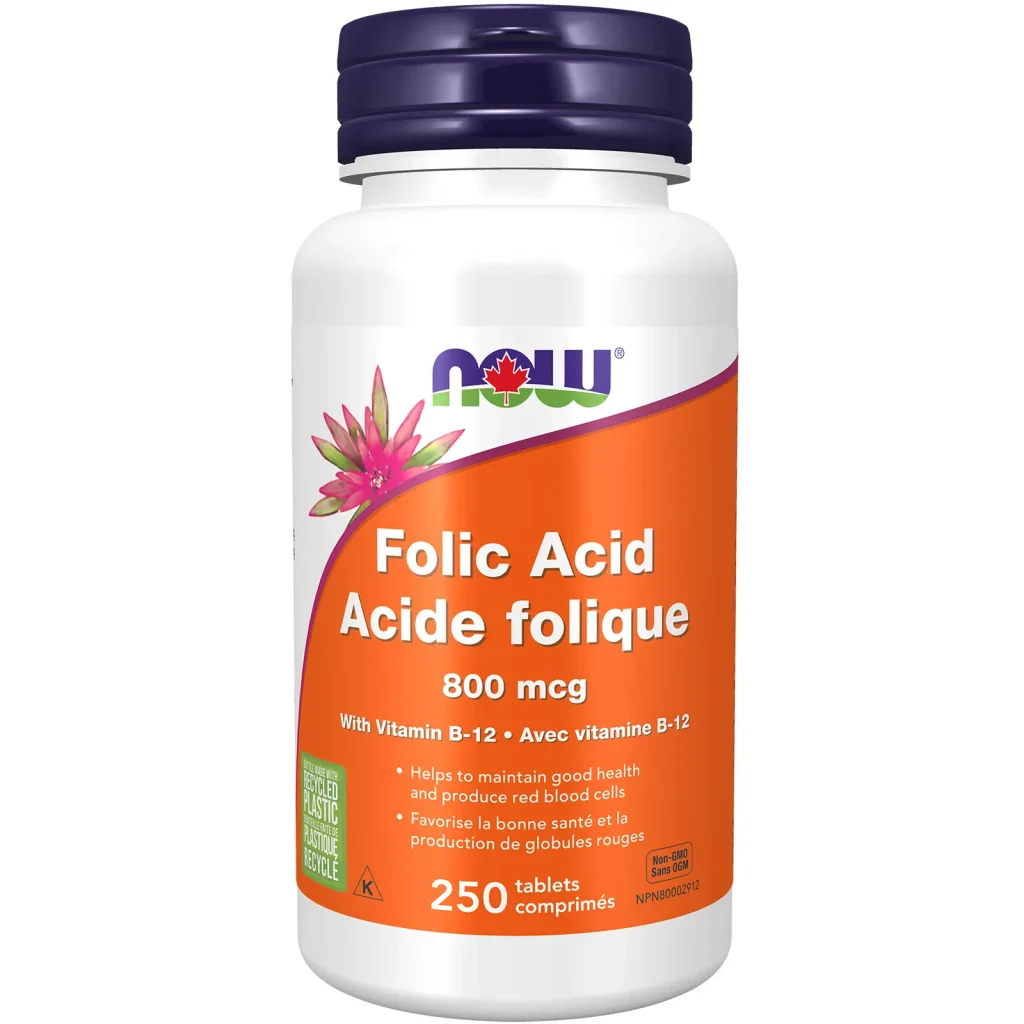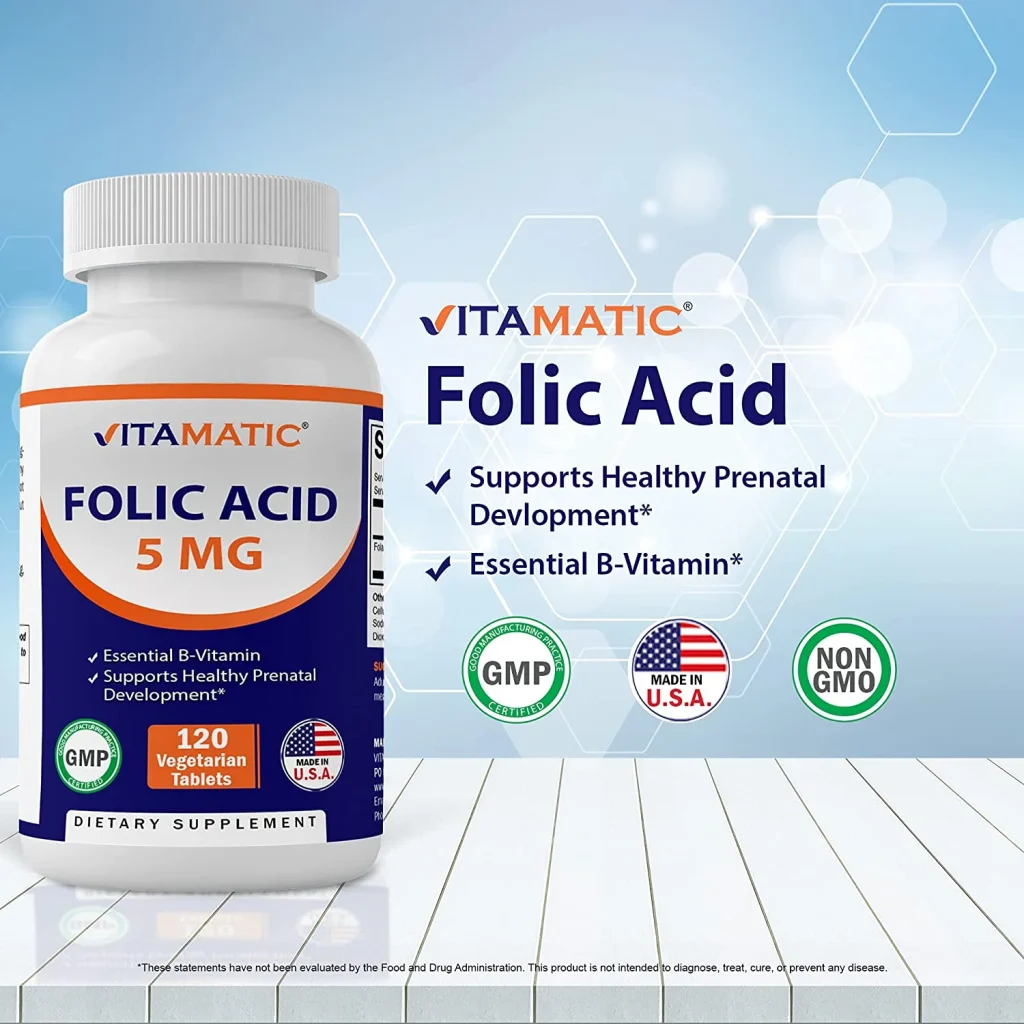What’s Folic Acid ?

Folic acid is the synthetic form of the naturally occurring vitamin folate, also known as vitamin B9. Folate is an essential B vitamin that has benefits, like helping your body make DNA and helping your cells divide. Folic acid supplements can also treat folate deficiencies and promote healthy neural tube development during pregnancy.
Folate and folic acid are forms of vitamin B9 used for deficiency and to prevent pregnancy complications. Many foods contain folate.
Since 1998, it has been added to cold cereals, flour, breads, pasta, bakery items, cookies, and crackers, as required by federal law. Foods that are naturally high in folate include leafy vegetables, okra, asparagus, certain fruits, beans, yeast, mushrooms, animal liver and kidney, orange juice, and tomato juice. Folic acid is also available as a supplement, and is often used in combination with other B vitamins.
Health Benefits
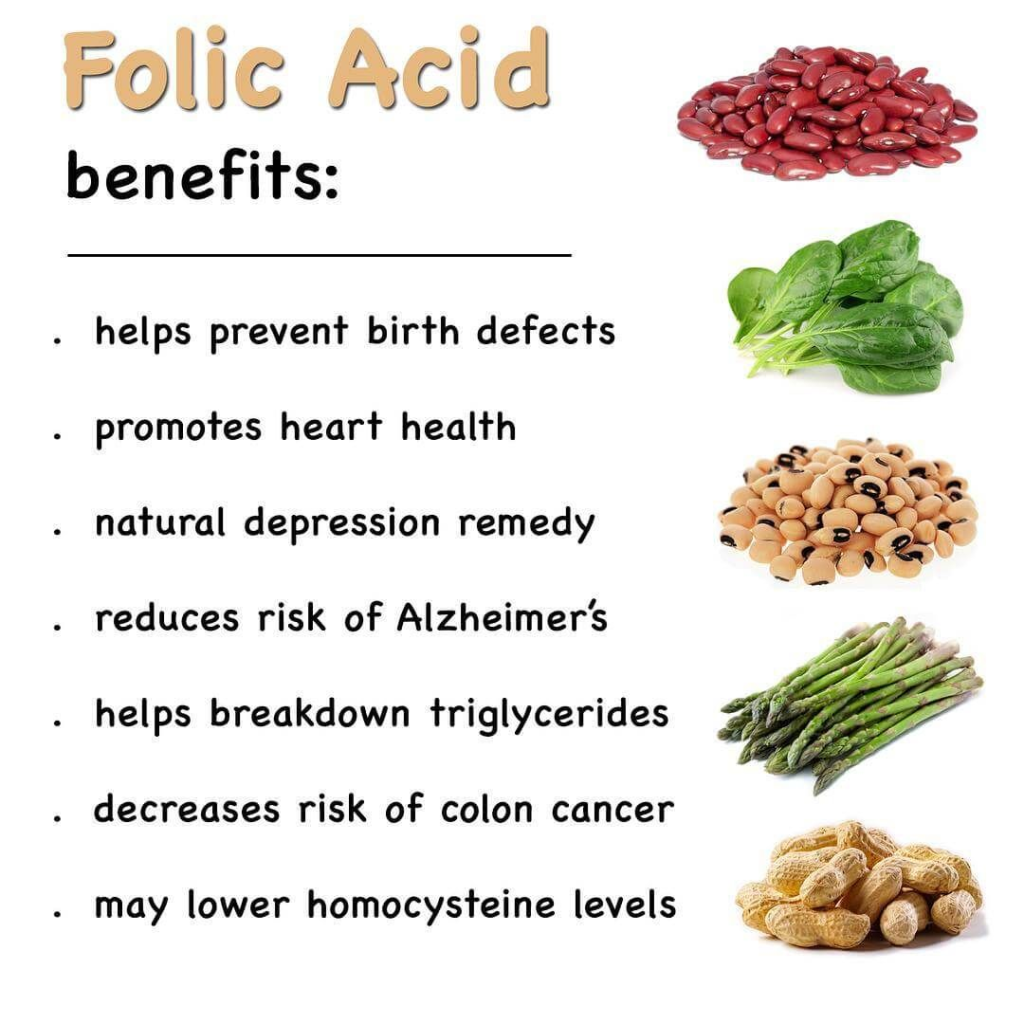
Folate is found in food, while folic acid is used in supplements. It’s also added to fortified foods like bread, pasta, and cereal.
1. Can Prevent Neutral Tube Defects
Healthcare providers recommend pregnant people and people who can become pregnant take folic acid,which helps reduce the risk of neural tube defects in the fetus. These defects affect the formation of the brain, spine, or spinal cord.
The most common defects include spina bifida and anencephaly. Spina bifida is an underdeveloped spine. Anencephaly occurs if there are missing parts of the brain and skull. Taking 400 micrograms daily during pregnancy can reduce the risk of these defects.
The United States started adding folic acid to fortified foods to reduce neural tube defects in 1998. Research has shown that this effort reduced neural tube defect rates by 28% from 1998-2011.
2. May Treat Mental Health Conditions
Research has shown that people with low levels of folate are more likely to have depression. About 30% of those with severe depression have folate deficiency.
One study found that folic acid and folate supplements can treat bipolar disorder, postpartum depression, and schizophrenia.Folate supplements with antidepressants may be more effective than antidepressants alone.
Some evidence suggests that folate supplements are not effective in treating mood disorders like depression. More research is needed to know whether they are useful.
3. Reduces the Risk of Stroke
Folic acid can lower homocysteine levels. Elevated homocysteine levels have been shown to increase the risk of stroke. Research has found that taking folic acid may prevent stroke, especially in countries that do not have folic acid fortification programs.
One review examined the effect of folic acid supplementation in countries without food fortification programs. The researchers found that folic acid reduced the risk of stroke by 15% for people in these areas. They noted that countries with food fortification programs, like Canada and the United States, did not see improvements in stroke risk from additional supplementation.
A large study in China found that adults with hypertension (high blood pressure) who took folic acid and enalapril for 4.5 years reduced stroke risk by 21%. This was more effective than just taking enalapril, which is a high blood pressure drug. China does not have a folic acid fortification program. It’s unlikely participants consumed additional folic acid from food.
4. Slows Age-Related Macular Degeneration (AMD)
Taking high doses of folic acid may slow the progression of age-related macular degeneration (AMD). This eye disorder leads to central vision loss. People aged 65 years and older are more likely to develop AMD.
Research has shown that taking B vitamins—including B6, folate, and B12—can regulate potential risk factors for AMD. Risk factors include homocysteine levels and hyperhomocysteinemia.
High-dose folic acid has been shown to slow progression more efficiently than thiamine (vitamin B1) and riboflavin (vitamin B2). Both are often used to treat AMD
5. Treats Folate Deficiency
A folate deficiency is rare, but certain conditions can affect how people absorb folate. People with inflammatory bowel disease (IBD) and kidney disease often develop folate deficiencies. People with these conditions can take folic acid to help replenish their folate levels.
A folate deficiency can cause megaloblastic anemia. This condition causes bone marrow to produce unusually large and immature red blood cells. Taking folic acid can relieve symptoms like fatigue, shortness of breath, heart palpitations, and mouth sores.
Sources
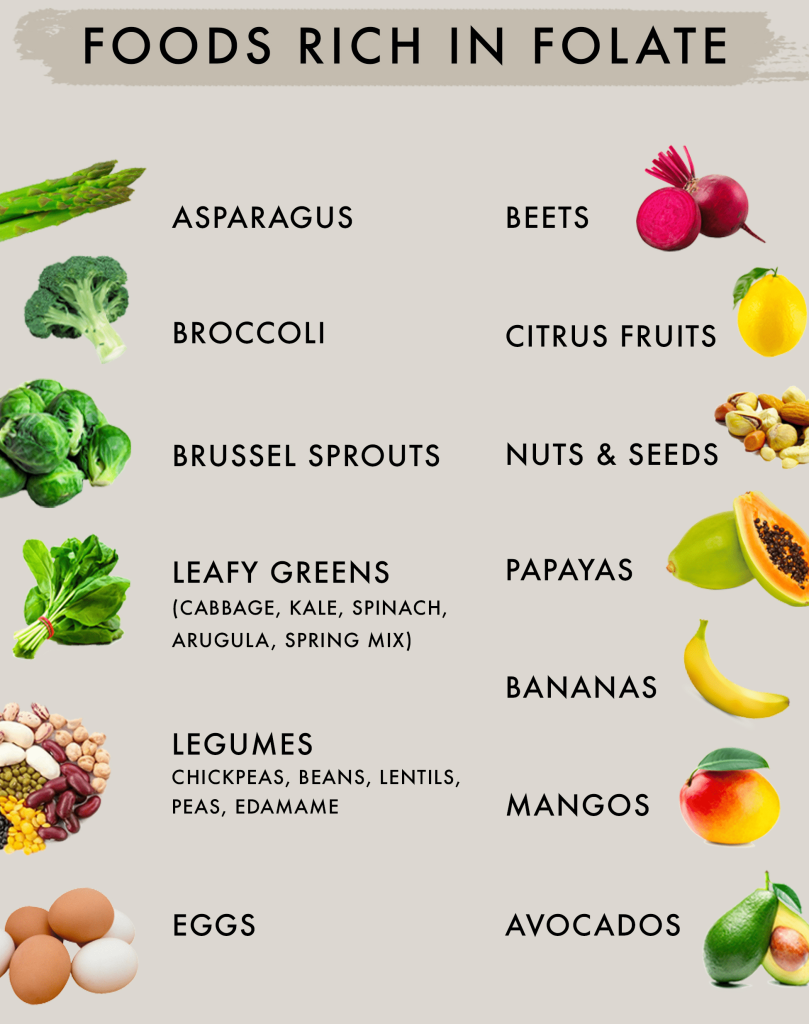
Unlike folate, folic acid is not naturally found in food. It’s the synthetic form of the B vitamin. It is often added to fortified foods. These foods are labeled as “enriched” and have added vitamins and minerals.
Enriched foods often include grain products like:
- Cereal: 100 micrograms (mcg) per ½ cup, or 25% of the daily value (DV)
- Cooked white rice: 90 mcg per ½ cup, or 25% of the DV
- Cooked spaghetti: 74 mcg per ½ cup, or 19% of the DV
- White bread: 50 mcg per slice, or 13% of the DV
Legumes, dark leafy greens, and citrus fruits naturally contain folate. Foods that offer folate include:
- Cooked lentils: 358 mcg per cup, or 90% of the DV
- Cooked beef liver: 212 mcg per 3 ounces, or 54% of the DV
- Beets: 148 mcg per cup, or 37% of the DV
- Cooked asparagus: 134 mcg per ½ cup, or 34% of the DV
- Cooked kidney beans: 131 mcg per cup, or 33% of the DV
- Cooked broccoli: 84 mcg per ½ cup, or 21% of the DV
- Avocado: 82 mcg per ½ avocado, or 21% of the DV
- Orange: 55 mcg per large fruit, or 14% of the DV
- Spinach: 58.2 mcg per cup, or 14% of the DV
- Papaya: 53 mcg per cup, or 13% of the DV
The main brand of Folic Acid in the market
